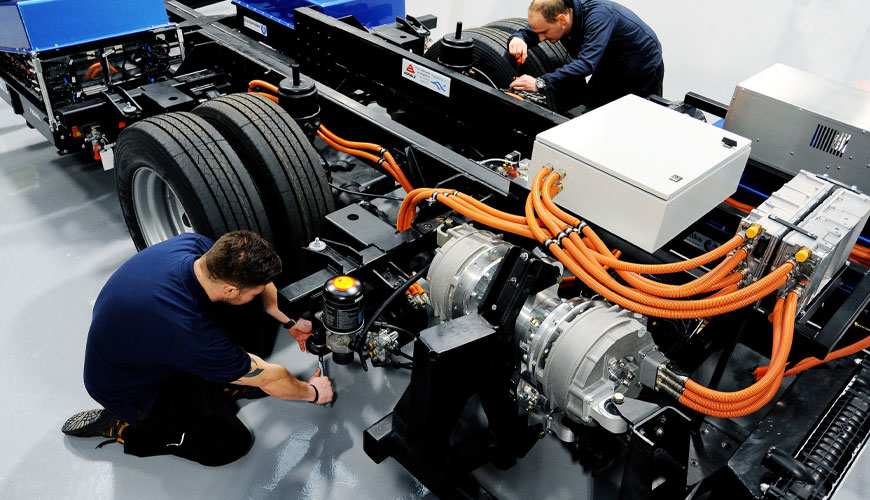

EUROLAB, with its state-of-the-art accredited laboratories and expert team, provides precise and fast testing services within the scope of GB-T 21437-3 testing. This part of GB-T 21437 establishes a bench test for evaluating the immunity of the devices under test (DUTs) to transient conduction by coupling over lines other than supply lines. Test transients simulate both fast and slow transients such as those from switching inductive loads and relay contact bounce.

This section describes three test methods:
Only one test method needs to be selected for slow passes, and only one test method for fast passes. This part applies to road vehicles equipped with nominal 12 V, 24 V or 42 V electrical systems.
This section describes methods for testing the immunity of electrical system components or devices under test (DUTs) to matched transients. These tests will be done in a laboratory environment. Test impact intensity levels should be mutually agreed between the vehicle manufacturer and the supplier prior to testing. The test pulses identified are typical pulses that represent the characteristics of most of the real transients that can occur with the vehicle.
Depending on its function or configuration, some test pulses may be skipped if a device is not affected by comparable transients in the vehicle. In special cases, it may be necessary to apply additional test pulses. It is part of the vehicle manufacturer's responsibility to define the test pulses required for certain components.
A test plan should be written to describe:
EUROLAB assists manufacturers with GB-T 21437-3 test compliance. Our test experts, with their professional working mission and principles, provide you, our manufacturers and suppliers, the best service and controlled testing process in our laboratories. Thanks to these services, businesses receive more effective, high-performance and quality testing services and provide safe, fast and uninterrupted service to their customers.
To get an appointment, to get more detailed information or to request an evaluation, you can ask us to fill in our form and reach you.